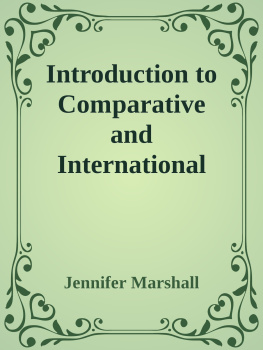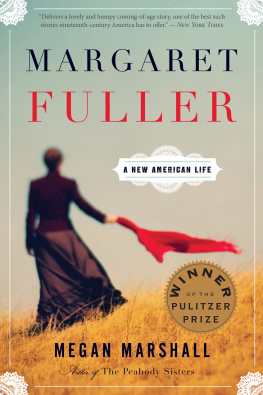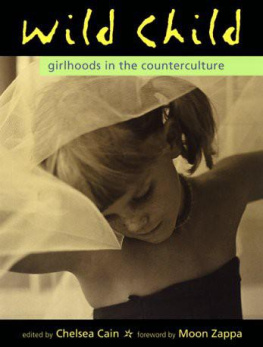Elizabeth Marshall - Graphic Girlhoods: Visualizing Education and Violence
Here you can read online Elizabeth Marshall - Graphic Girlhoods: Visualizing Education and Violence full text of the book (entire story) in english for free. Download pdf and epub, get meaning, cover and reviews about this ebook. year: 2018, publisher: Taylor & Francis (CAM), genre: Children. Description of the work, (preface) as well as reviews are available. Best literature library LitArk.com created for fans of good reading and offers a wide selection of genres:
Romance novel
Science fiction
Adventure
Detective
Science
History
Home and family
Prose
Art
Politics
Computer
Non-fiction
Religion
Business
Children
Humor
Choose a favorite category and find really read worthwhile books. Enjoy immersion in the world of imagination, feel the emotions of the characters or learn something new for yourself, make an fascinating discovery.

- Book:Graphic Girlhoods: Visualizing Education and Violence
- Author:
- Publisher:Taylor & Francis (CAM)
- Genre:
- Year:2018
- Rating:3 / 5
- Favourites:Add to favourites
- Your mark:
- 60
- 1
- 2
- 3
- 4
- 5
Graphic Girlhoods: Visualizing Education and Violence: summary, description and annotation
We offer to read an annotation, description, summary or preface (depends on what the author of the book "Graphic Girlhoods: Visualizing Education and Violence" wrote himself). If you haven't found the necessary information about the book — write in the comments, we will try to find it.
Graphic Girlhoods: Visualizing Education and Violence — read online for free the complete book (whole text) full work
Below is the text of the book, divided by pages. System saving the place of the last page read, allows you to conveniently read the book "Graphic Girlhoods: Visualizing Education and Violence" online for free, without having to search again every time where you left off. Put a bookmark, and you can go to the page where you finished reading at any time.
Font size:
Interval:
Bookmark:
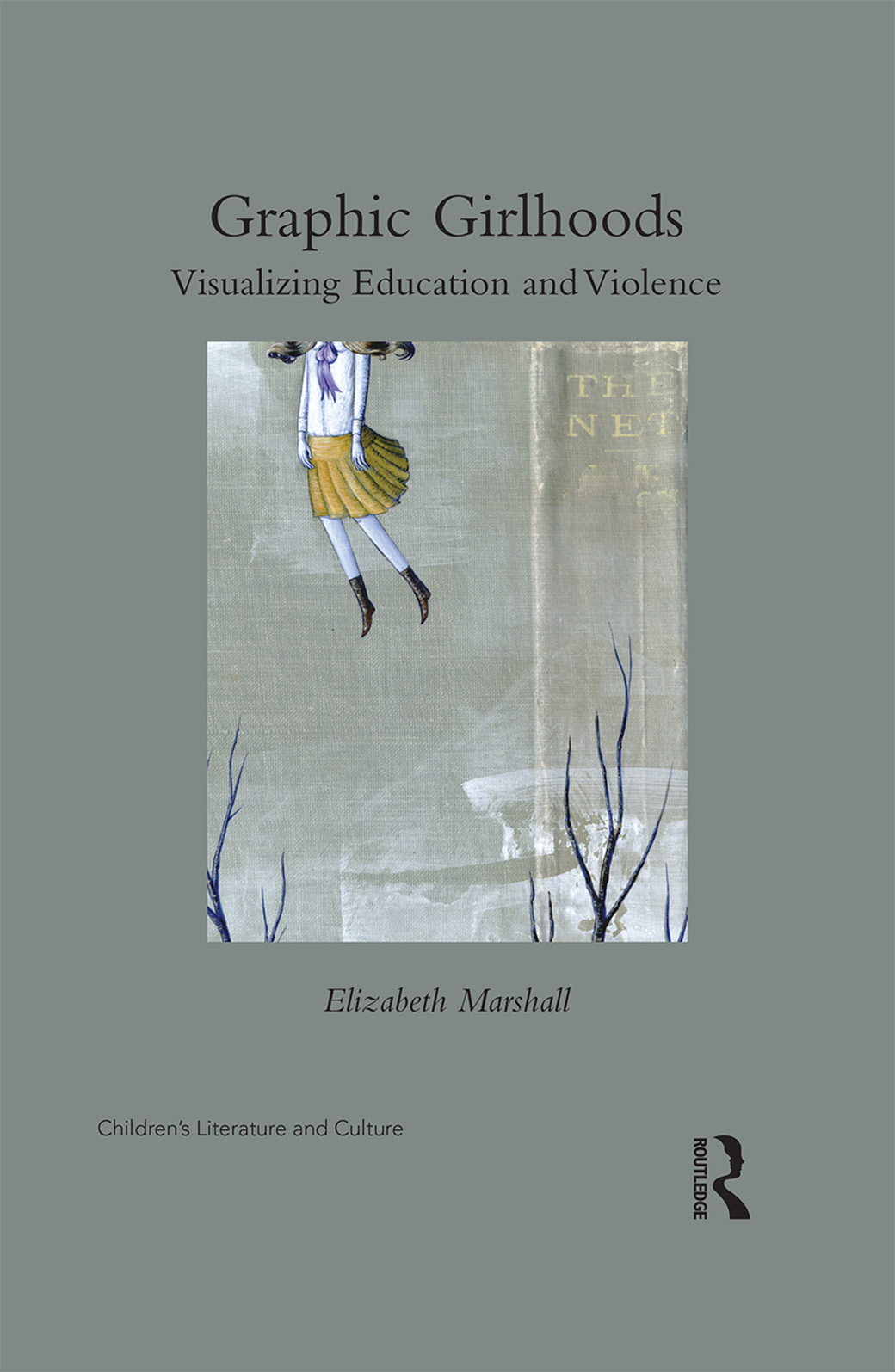
Graphic Girlhoods
Elizabeth Marshalls Graphic Girlhoods: Visualizing Education and Violence is a highly pertinent study of the contemporary depiction of violence in graphic texts such as picture books, comics, memoirs and other visual works that demon-strate how oppression and violence are key factors in the upbringing of girls in America. In fact, given recent developments in America, Marshall thoughtful if not provocative book should be required reading for students, teachers, and parents of all ages and genders because she grasps how educational and other in-stitutions in America continue to foster racism and sexism by violently imposing rules of the civilizing process that impede the autonomy of girls. It is through the resistance in the graphic texts she studies, she maintains, that young female, and perhaps male, readers will be able to learn to combat institutional abuse and narrowmindedness. In short, her book is a dynamite pedagogy of the violated.
Jack Zipes, University of Minnesota
Graphic Girlhoods investigates texts of girlhood from multiple conceptual and methodological frameworks ranging from picture book theory to comic studies to visual culture studies and autobiography. An assemblage of critical feminisms further complicates Marshalls theoretical treatment. Each of these frameworks allows Marshall to craft a complex argument which gestures towards the danger and disturbing extracurricular activities of education, girlhood, and violence. This book is a must read for scholars in childrens literature, childhood, and feminist youth studies.
Lisa Weems, Miami University of Ohio
Drawing on a dynamic set of graphic texts of girlhood, Elizabeth Marshall identifies the locations, cultural practices, and representational strategies through which schoolgirls experience real and metaphorical violence. How is the schoolgirl made legible through violence in graphic texts of girlhood? What knowledge about girlhood and violence are under erasure within mainstream images and scripts about the schoolgirl? In what ways has the schoolgirl been pictured in graphic narratives to communicate feminist knowledge, represent trauma, and/or testify about social violence? Graphic Girlhoods focuses on these questions to make visible and ultimately question how sexism, racism and other forms of structural violence inform education and girlhood. From picture books about mean girls like The Recess Queen or graphic novels like Jane, The Fox and Me to Ronald Searles ghastly pupils in the St. Trinians cartoons to graphic memoirs about schooling by adult women, such as Ruby Bridgess Through My Eyes and Lynda Barrys One Hundred Demons texts for and about the schoolgirl stake a claim in ongoing debates about gender and education.
Elizabeth Marshall is an Associate Professor at Simon Fraser University, Canada.
Childrens Literature and Culture
Jack Zipes, Founding Series Editor
Philip Nel, Current Series Editor
For a full list of titles in this series, please visit www.routledge.com.
Childhood and Pethood in Literature and Culture
New Perspectives on Childhood Studies and Animal Studies
Edited by Anna Feuerstein and Carmen Nolte-Odhiambo
Origin Narratives
The Stories We Tell Children about Immigration and Interracial Adoption
Macarena Garcia Gonzales
Italian Childrens Literature and National Identity
Childhood, Melancholy, Modernity
Maria Truglio
The Beloved Does Not Bite
Moral Vampires and the Humans Who Love Them
Debra Dudek
Affect, Emotion and Childrens Literature
Representation and Socialisation in Texts for Children and Young Adults
Edited by Kristine Moruzi, Michelle J. Smith, and Elizabeth Bullen
The Embodied Child
Readings in Childrens Literature and Culture
Edited by Roxanne Harde and Lydia Kokkola
Interactive Books
Playful Media before Pop-ups
Jacqueline Reid-Walsh
Graphic Girlhoods
Visualizing Education and Violence
Elizabeth Marshall
First published 2018
by Routledge
711 Third Avenue, New York, NY 10017
and by Routledge
2 Park Square, Milton Park, Abingdon, Oxon OX14 4RN
Routledge is an imprint of the Taylor & Francis Group, an informa business
2018 Taylor & Francis
The right of Elizabeth Marshall to be identified as author of this work has been asserted by her in accordance with sections 77 and 78 of the Copyright, Designs and Patents Act 1988.
All rights reserved. No part of this book may be reprinted or reproduced or utilized in any form or by any electronic, mechanical, or other means, now known or hereafter invented, including photocopying and recording, or in any information storage or retrieval system, without permission in writing from the publishers.
Trademark notice: Product or corporate names may be trademarks or registered trademarks, and are used only for identification and explanation without intent to infringe.
Library of Congress Cataloging-in-Publication Data
CIP data has been applied for.
ISBN: 978-1-138-09270-9 (hbk)
ISBN: 978-1-315-10735-6 (ebk)
Typeset in Sabon
by codeMantra
For Maisie
This book represents over a decade of feminist theorizing about girlhood, texts, and education, and its publication would not be possible without the help of and encouragement from an amazing network of friends and colleagues. I thank Kristine Alexander, Kumari Beck, Angela Cummings, Brian Demuy, Pete Edmonds, Helen Fitzsimmons, Joe Granato, Patti Lather, Lorraine and Rob Kitsos, Marilyn Kwong, Jonarno Lawson, Laura Mamo, Kathleen Negraeff, Michelle Pidgeon, zlem Sensoy, and Rob Tierney for their support during the writing of this manuscript. Thank you to those colleagues who commented on earlier paper drafts or presentations of this work: Kate Capshaw, Ann Chinnery, Anna Mae Duane, Adam Greteman, Derritt Mason, Nat Hurley, Libby Gruner, Nathalie op de Beeck, Lissa Paul, Jessica Ringrose, Lara Saguisag, and Rowan Shafer-Rickles. I am extremely grateful to the anonymous reviewers who provided essential feedback that greatly improved this manuscript.
I appreciate the help of Lisa Weems whose critical responses early on in the writing of this project allowed me to restructure this study in a more intelligent and cohesive way. Theresa Rogers offered me humor when I most needed it as well as important editorial suggestions. Matt Jones, author of the Ronald Searle blog, read and commented on an earlier draft of and added helpful context and information. Naomi Hamer provided sound advice at just the right moments. Phil Nel championed this work from the start, and discussed many of the chapters as they were being conceptualized and presented for the first time in conference format. Special thanks to Leigh Gilmore who read and reread the many drafts of this book, providing keen theoretical guidance, and steadfast support that made finishing this book a reality. The team at RoutledgeJennifer Abbott, Veronica Haggar, and Assunta Petroneguided me patiently through the process.
Individual artists and presses generously allowed me to reproduce material gratis or for a reduced fee. I particularly thank Lela Lee and Una for permission to use their work. I am grateful to Rebecca Chaperon for agreeing to have her art and one of her absent schoolgirls featured on the front cover of
Font size:
Interval:
Bookmark:
Similar books «Graphic Girlhoods: Visualizing Education and Violence»
Look at similar books to Graphic Girlhoods: Visualizing Education and Violence. We have selected literature similar in name and meaning in the hope of providing readers with more options to find new, interesting, not yet read works.
Discussion, reviews of the book Graphic Girlhoods: Visualizing Education and Violence and just readers' own opinions. Leave your comments, write what you think about the work, its meaning or the main characters. Specify what exactly you liked and what you didn't like, and why you think so.


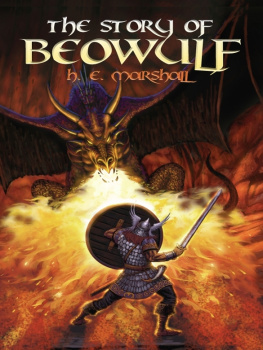



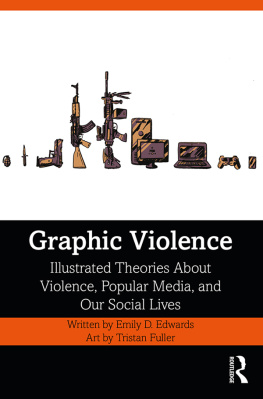
![EMC Education Services [EMC Education Services] - Data Science and Big Data Analytics: Discovering, Analyzing, Visualizing and Presenting Data](/uploads/posts/book/119625/thumbs/emc-education-services-emc-education-services.jpg)
